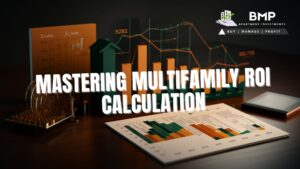Multifamily real estate investing not only offers the potential for lucrative returns but also provides distinct tax advantages. In this guide, we delve into the tax benefits that make multifamily investments an attractive option for savvy investors.
Depreciation Benefits
Accelerated Depreciation
One of the primary tax advantages in multifamily real estate is accelerated depreciation. The IRS allows investors to depreciate the cost of the property over a shorter period than its actual useful life. This results in higher deductions early on, reducing taxable income and increasing cash flow.
Cost Segregation Studies
Optimizing depreciation benefits further involves conducting cost segregation studies. This strategy allows investors to identify components of the property with shorter depreciation periods, such as appliances or flooring. By accelerating depreciation on these elements, investors can enhance their overall tax advantages.
Mortgage Interest Deductions
Deductible Interest Expenses
Investors in multifamily real estate can deduct mortgage interest expenses from their taxable income. This deduction extends to interest on loans used for property acquisition, improvements, or even refinancing. Maximizing deductible interest expenses contributes significantly to lowering overall tax liability.
Refinancing Opportunities
Refinancing presents an additional avenue for tax advantages. When refinancing a multifamily property, the interest on the new loan becomes deductible. This not only provides financial flexibility but also enhances the property’s overall tax efficiency.
Passive Activity Losses
Offsetting Income with Losses
Multifamily real estate investors can leverage passive activity losses to offset other income sources. Passive losses, such as depreciation deductions, can be used to reduce taxable income from non-real estate activities. This strategic approach contributes to overall tax efficiency.
Material Participation Exception
For active investors involved in property management, the material participation exception allows the offset of passive losses without limitation. By actively participating in managing the multifamily property, investors can maximize tax advantages and optimize their overall financial position.
1031 Exchange for Deferring Capital Gains
Deferring Capital Gains Taxes
The 1031 exchange provision enables multifamily real estate investors to defer capital gains taxes when selling one property and reinvesting the proceeds into another “like-kind” property. This strategy allows for the preservation of capital, fostering continued growth without immediate tax implications.
Wealth Preservation and Growth
By consistently utilizing 1031 exchanges, investors can preserve and grow their wealth without the burden of capital gains taxes. This not only facilitates portfolio expansion but also enhances the long-term financial viability of multifamily real estate investments.
Conclusion
In conclusion, multifamily real estate investing offers a myriad of tax advantages that savvy investors can leverage to optimize their financial position. From accelerated depreciation and mortgage interest deductions to passive activity losses and 1031 exchanges, the tax benefits associated with multifamily investments contribute significantly to overall profitability. This guide equips investors with insights to navigate the complex tax landscape, ensuring they capitalize on every available advantage in their multifamily real estate ventures.











